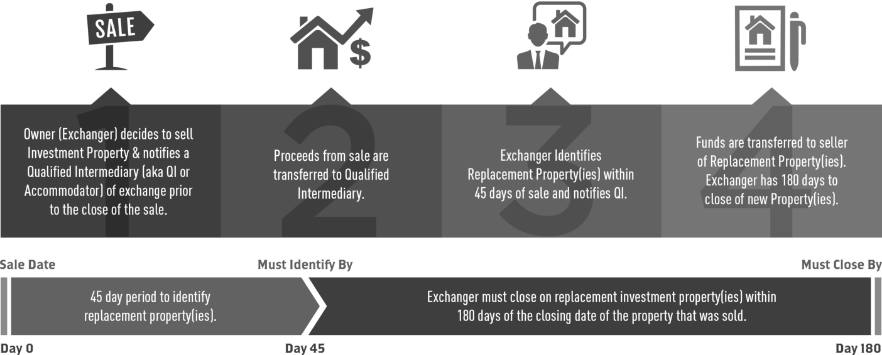With over 40 years of combined experience in real estate investments, we know the precise history and track records of the top DST sponsors, asset management firms, and property developers. Our goal is to help clients build wealth through a tax-deferred, diversified investment approach, balancing returns with acceptable levels of risk. Unlike many DST registered representatives, we fully advise our clients through all tax and legal issues related to their exchange transactions and guide them through every step of the 1031 exchange process. Throughout the asset selection process, we share our extensive investment experience and property analysis research with our clients. The following information provides details on the DST structure and how investors could benefit from a 1031 exchange.
What is a DST?
A DST (Delaware Statutory Trust) is a legal trust created under Delaware law in which each investor owns a beneficial interest. For federal income tax purposes, each investor is treated as owning an undivided fractional interest in the property. DSTs qualify as replacement properties for 1031 Exchanges under IRS Revenue Ruling 2004-86. While the DST has been around for decades, it was not until 2004, when the IRS issued the revenue ruling, that they were used for 1031 purposes. Since that time, demand for DSTs has skyrocketed as more real estate investors realize their benefits. Current tax laws make the DST the preferred structure to purchase management-free real estate through a 1031 exchange. Real estate investors looking to get out of management and still maintain the tax deferral benefits of a 1031 should consider DSTs. DST properties offer benefits that other types do not, including lower minimum investment amounts, diversification, ease of financing, and potentially better cash flow and appreciation. DST properties allow investors to purchase part of a larger income-producing property, with minimum investment amounts as low as $100,000, and they receive all the benefits of property ownership without the burdens of property management. Additionally, investors participate in the property net income and capital appreciation, as well as the tax benefits from depreciation.
What is the DST process?
A real estate company, known as a sponsor, purchases a particular property structured under a newly formed DST. The properties purchased are typically large institutional-grade properties that most individual real estate investors would be unable to purchase on their own. A broad range of asset types are purchased under a DST including apartment complexes, office buildings, NNN properties, assisted living, self-storage, medical offices, student housing, industrial buildings, and even golf courses. Once the property is purchased, interests in the DST are offered to investors and sold through secondary escrow closings until all the equity in the DST is sold. Investors are paid cash flow distributions each month based on their ownership interest. For example, if an investor purchases 1.237% of the DST, they receive 1.237% of the net cash flow generated by the property. Quarterly reports are provided to investors and their registered representatives to remain updated on the property. Annually, the sponsor provides investors with a Year-End Operating Statement that lists the information necessary, including valuation, for the investors to report their income, deductions, and depreciation to offset their taxes. DSTs are purchased initially to satisfy a 1031 exchange and with the intent to sell it in the future for a profit. On average, DSTs are sold seven years after purchase, but the holding period varies by property and market conditions. When the property sells, each investor receives their proportionate share of the net sales proceeds. Using our previous example, an investor that purchased 1.237% of a DST will receive 1.237% of the net sales proceeds. Investors can choose to take the sales proceeds in cash or complete another 1031 exchange to continue to defer their taxes.
What are the DST benefits?
Management free
DST properties are managed by professional in-place management companies with a vested interest in the successful performance of the property. This brings with it plenty of benefits for investors. DST investors no longer need to deal with the “5 T’s” of real estate ownership: tenants, toilets, trash, telephone calls, and time commitments. The day-to-day supervision of the property is handled by an experienced real estate company with the staff and the necessary resources to provide better and more efficient management.
Potentially higher cash flow and appreciation
DSTs tend to benefit from the economies of scale associated with larger institutional type properties. DST sponsors, due to their financial strength, negotiating power, and high purchase volume, frequently purchase properties with better terms and financing than those available to individual buyers. Due to these factors, and in conjunction with professional management, DSTs may provide investors with better cash flow and appreciation, depending on the type of property, than properties purchased individually.
Diversification
Diversification is a prudent investment goal, but purchasing a commercial property requires a substantial amount of equity, forcing real estate investors to put a lot of their “eggs in one basket.” DSTs offer a solution to this problem because they can be purchased for as little as $100,000. Even smaller exchanges can be diversified. For example, an investor with a $360,000 exchange could purchase three DSTs, by investing $120,000 into each property, in different locations and asset types across the country.
No closing risks
IRS Code 1031 imposes strict time deadlines to complete an Exchange: 45 days to identify replacement properties and 180 days to close. Many exchanges fail because investors are unable to find and close on replacement properties in time. Because DSTs are already purchased by the trust, there are no closing risks. Investors can close on their DST replacement properties within one week after selecting their property and well within the 1031 exchange deadlines.
No loan issues
For a 1031 exchange, any debt on a sold property needs to be replaced with equal or greater debt on a replacement property. Often investors find it difficult to obtain financing to replace their debt. DSTs solve this problem by making the trust, not the investor, the borrower. There are no loan documents for the investors to sign or prequalification to pass. Although the investor is not liable or even a party to the loan, the debt on the DST qualifies as replacement debt for the investor’s exchange.
Asset protection
The DST is a bankruptcy-remote entity, meaning that it prevents the investor’s creditors from seizing the property and protecting the investor from liability related to the property.
Other than DST structured properties, IPA also provides advice and analysis for the following asset types:
TIC Properties
Similar to DSTs, TIC properties allow investors to purchase part of a larger income-producing property, with minimum investment amounts. These properties qualify for 1031 Exchanges under IRS Revenue Procedure 2002-22. Investors receive all the benefits of property ownership, without the burdens of property management. Investors participate in the property net income and capital appreciation, as well as the tax benefits from depreciation.
- High-grade, Class-A property with high-credit tenants
- Professionally managed property
- Low minimum investment amounts allowing for diversification of equity
- Non-recourse mortgage financing
Co-Invest Properties
Through our partnerships with successful real estate companies, we offer co-investment opportunities for a wide array of real estate assets. Property types range from stabilized income-producing properties to commercial development projects. Buyers purchase a 50% interest or more in the property and co-invest with the real estate company that develops and/or manages the property. This option allows the investor to maintain control of the property while leaving the transactional and management expertise to the co-investing partner.
- Value-add & development opportunities
- Professionally managed property
- Negotiated ownership control & participation
- Top-tier loan terms
- NNN Properties
Triple Net Lease (NNN)
These properties are generally leased to a single tenant on a long-term basis. Under an NNN lease, the tenant pays for most, if not all, of the property expenses. The investor receives rental income with almost no management responsibilities. Factors that determine the quality of a NNN property include tenant credit quality, lease terms, property condition, and market-related issues, to name a few. NNN properties are fully owned by a single investor, giving him/ her direct ownership and full control of the property.
- High-grade, Class-A property with high-credit tenants
- Professionally managed property
- Property owner control
- High amount of equity required for purchase
- Recourse mortgage financing
- Lender-approval & pre-qualification for loans


The 1031 exchange process is completed through the registered representative, the sponsor company, the Qualified Intermediary, and the client, which are described below.
Registered Representative
A registered representative is an individual who is licensed to sell securities. A security as it relates to the DST process is the equity available in a particular offering that clients can purchase for fractional ownership. At IPA, we have two principal registered representatives who assist clients directly, analyze properties, research markets, examine locations and demographics, and stay current on all tax, securities, and legal regulations.
Sponsor
A sponsor is a real estate investment and management company that purchases properties under the DST structure and offers investments in the property through the trust. The sponsor’s role is to ensure the highest and best performance of each property they manage. The sponsor handles all asset management responsibilities, quarterly reports, annual tax and report packages, performance reviews and budgets, and distribution of monthly cash flow to investors. While most sponsors provide an investor relations team, the registered representative’s office generally handles all requests and inquiries at the benefit of the client.
Qualified Intermediary
A Qualified Intermediary (QI), also referred to as an Accommodator or Facilitator, is a required neutral third party who facilitates a successful IRC Section 1031 tax-deferred exchange. The use of an experienced qualified intermediary can significantly reduce the complexity of an exchange by assuring the proper execution of required documentation. The careful selection of the qualified intermediary is essential to ensure the highest level of expertise and security of funds. The QI works with both the escrow company and the sponsor company to ensure a smooth transition from escrow sale to 1031 exchange.
Other Important Terms
Capital Gains Taxes
Tax assessed on the positive difference between the sale price of the asset and its original purchase price; the 1031 exchange process allows investors to defer this tax
Relinquished Property
The property being sold through escrow
Replacement Property
The property being purchased with the funds acquired from the relinquished property
Holding Name/Title
The name or title that the relinquished property is held, which generally needs to be the exact title that the replacement property is also held
ID Period
Once escrow closes on the relinquished property, the closing date is recorded, and the exchanger has 45 days to close on a replacement property through a 1031 exchange or formally identify properties that they will close in within 180 days
Identification Form
The form used to identify properties on or before midnight of the 45th day from the date the relinquished property closed
Calculate your identification period
We work with clients from all stages of the sale and exchange process including:
Property Listed for Sale
After you list your property for sale, we can help you find a Qualified Intermediary that is best for you. The QI will coordinate with escrow, set up your exchange file, and keep your registered representative aware of the details of your account as the escrow closing progresses.
Property Sold
If your property has already sold or is close to selling, you have most likely already secured a Qualified Intermediary to receive the funds from your escrow sale. You will provide your QI’s information to your registered representative who will reach out to them regarding the details of your account. You will then decide on the best options for your replacement property according to the research and analysis provided by the registered representative.
Ready to Exchange
If your property has sold and your funds are in account with your Qualified Intermediary, you have 45 days to close on a replacement property or submit an identification form. 1031 exchange closings take one week or less so you can successfully close on your replacement property far before your 45th day. After you decide on a DST offering, the funds in your QI account will be wired to the sponsor company to complete the exchange.
Why should I do a 1031 Exchange?
Exchanging into our 1031 Exchange DST properties allows you to defer capital gains tax on your appreciated property investment, go management-free, collect truly passive income, and continue to grow your investment asset values on a tax-deferred basis.
How We Analyze the Best Locations
In our 40 years of combined real estate investment experience, from peaks to troughs and everything in between, we have continued to understand the importance of location. In performing several methods of analysis, we weigh location as not only the strongest indicator, but well over 50% of the pertinent criteria impacting the ultimate success of a real estate investment. Therefore, we pay particularly close attention to the following location attributes when considering real estate investments:
Growth – Wages, Jobs, Population, Rents
Growth is a must for any investment to succeed. For real estate investments, the nature of the growth in a particular area has a significant effect on the success of the area. Rent growth is the clearest indicator of future income and appreciation as it is highly correlated with wage and job growth. Additionally, population growth requires job growth. As these occurrences are all interrelated, growth generally indicates positive real estate investments.
- Rent Growth: the expected trend in market rental rates over the period of projection, expressed as an annual percentage increase
- Wage Growth: the rise in wages, usually expressed as a percentage
- Population Growth: the increase in the number of individuals in a given geographic location
In-Fill/Barriers to Entry – High Barriers to Entry
Obstacles or hindrances that make it difficult to enter a given market due to the property being located within a fully developed area and/or one limited by natural amenities (i.e. the ocean). The Transamerica Pyramid in the financial district of San Francisco is one extreme example of an infill location as there is no raw land left in the surrounding area. Some infill locations might also have privately owned vacant land. The higher the price for the land, the more infill the location is given the area and economy.
Close-In – Close to CBD, Economic Center, and Natural Amenities
Close-in refers to the economic centers driving the economy including central business districts, economic centers, and natural amenities. Additionally, natural amenities (i.e. bodies of water, mountains, forests, etc.) could be indicators of migration and population growth.






